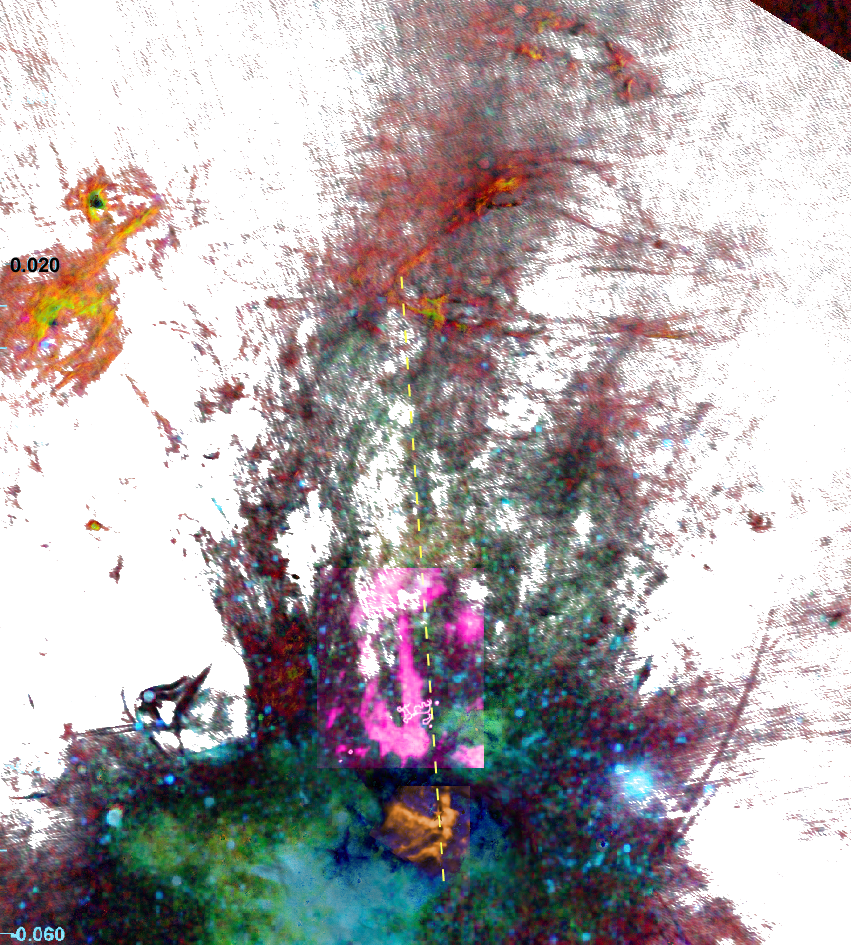At its center, our Milky Way galaxy has an ancient black hole that over 10 billion years has gobbled millions of suns. Most large galaxies have one, but those holes are too far away to study in detail so their impacts on their surroundings are unclear. However, before gas and dust reach the hole, gamma-rays and charged particles are emitted to great distances. So the escape path once uncovered enables archeology; astronomers can dig through accumulated debris to wondrous artifacts below. Presently our central black hole is very sedate so the route down might have closed up.
However, results published in the December 1 2021 Astrophysical Journal by professor Gerald Cecil and collaborators in Japan, Australia, and India provide evidence of recent power surges. “In 2019 some of us showed that the Milky Way’s central black hole powered up tens of millions of times its current luminosity as it ate a stream of gas a few million years ago” Cecil noted. That event irradiated a gas plume over 200,000 light years distant from the Milky Way that is still recovering from being hammered by that energetic outburst. Now the new paper reports that the team has found the particle beam of this event, and it is still active at a low level. There’s too much dust along the 26,000 light-year distance to the center of our galaxy for UNC’s SOAR telescope in Chile to penetrate, so to sweep through it the team used the most powerful astronomical facility on Earth — the Atacama Large Millimeter Array (ALMA) of radio telescopes also high in the Chilean Andes. “We found methyl alcohol and other molecules being dragged along for ten light-years distance in an organized flow from the center” said Cecil. Unlike many radio and X-ray telescopes, ALMA can map gas motions, so the team could isolate the flow from unrelated gas along our line of sight to establish its orientation and energy. “The flow is glowing feebly today, but studies by us and others show that at full power it could inflate the huge gamma-ray and X-ray bubbles that we see looming 50,000 light years above and below the disk of our galaxy!” co-author Alex Wagner of Tsukuba University in Japan noted. The team simulated the flow’s impact on the Milky Way’s gas clouds using large computer clusters at UNC and the Australian National University, obtaining an excellent match. Notes Cecil, “we plan to map along this flow using ALMA and eventually the James Webb Space Telescope. We want to pin down how often and for how long the flow hence our black hole powers up.” Highly magnified images by the worldwide Event Horizon Telescope that includes ALMA may soon reveal the flow’s base mere light-hours distant from the black hole to complement the team’s study on scales of one to one thousand light years. “Then we can unravel the history of this exotic but universal phenomenon, and begin to understand how the black hole influenced our Milky Way galaxy. ” said Wagner.
Figure caption: 50 light years across the center of our galaxy. The 4.3 million solar mass black hole is at the center of the yellow “minispiral” near the bottom of the image. Red/orange denote ionized hydrogen, green and blue colors x-rays, and dark filaments trending upward are radio waves. Part of the ALMA molecular flow established by the team is shown in pink. Further observations with ALMA are needed to see if it extends beyond the top shown here.


